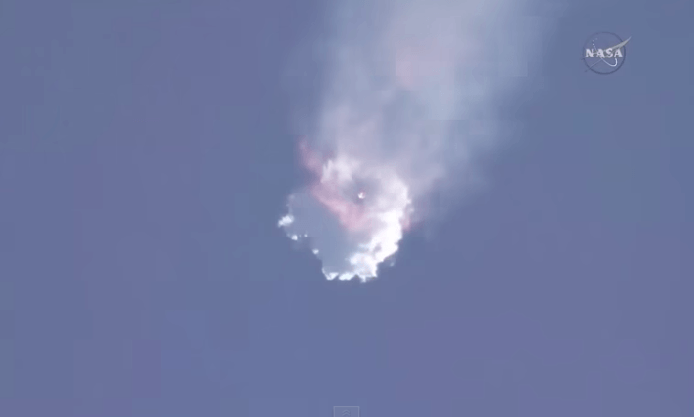The explosion of SpaceX’s Falcon 9 launch on Sunday, June 28 only proved an obvious truth: rocket science is hard. It will have little effect on the future of either the company or commercial space flight.
It was a beautiful day for a rocket launch. I sat, like hundreds of thousands of others, behind a laptop screen watching a sleek white cylinder surge ponderously into a sunny Florida sky. Rockets look impossibly slow, columns of flame hurling themselves against gravity, inching closer and closer to puffy white clouds. This launch—SpaceX’s seventh to the International Space Station—never quite reached them. Two minutes after liftoff, it shattered into a puff of smoke.
The rocket was, of course, unmanned, but the fallout from failed flights is much more than just scraps of metal sinking into the Atlantic. A failure for SpaceX is a failure for the entire nascent commercial spaceflight industry. And it is the second commercial failure in the last year; in October, Orbital’s Antares rocket was destroyed because of an engine malfunction. Launches like these shake confidence in space startups and lead critics to question why we’re spending taxpayer money to subsidize the design of fancy fireworks.
Of course, this view is incredibly shortsighted. This is rocket science, and it turns out it takes a long time—and a bit of trial and error—to do it right. Companies like SpaceX and Orbital are disrupting an industry long-monopolized in the U.S. by the United Launch Alliance (ULA), a joint venture between Lockheed Martin and Boeing. SpaceX offers launch costs that are nearly eight times cheaper than ULA’s and has taken the commercial spaceflight industry by storm with a backlog of launch contracts worth more than a billion dollars.
It will take more than one launch failure to shake customer confidence in SpaceX. None of the contract holders have yet jumped ship. However, it is worrisome that the company still doesn’t know the cause of the failure. Falcon 9, the proper name for SpaceX’s rocket, has flown admirably in many launches, so the problem is more likely in assembly than in design. But it is unlikely that a customer will green-light a launch before the issue is identified and fixed, and these delays do nothing to address SpaceX’s reputation as a company that flies rockets built with duct tape and chicken wire. How else would they achieve that stunningly low launch cost?
The easy answer to that question, of course, is that ULA flies government-spec rockets that are engineered to the nth degree with reliability rather than cost in mind. That’s why ULA has managed to fly more than 70 launches without a single catastrophic failure, a reliability record they tout to justify their government-sized launch price. Excluding payload costs, customers could buy and explode eight Falcon 9s (think of the pretty fireworks!) before it would be worth it to buy on to the ULA launch platform.
One aspect of SpaceX’s practice for which last Sunday’s failure will be a liability is, of course, its aspiration to fly astronauts into space. Their manned capsule, Dragon 2, will begin testing later this year alongside a new rocket platform, the Falcon Heavy. (In reality, it’s not that new: it’s essentially three of the old Falcon 9s bolted together.) With human rather than scientific cargo, reliability becomes more important than cost.
However, the recent private-sector launch failures are not a reason to scrap government support of the commercial space program. Access to private spaceflight substantially reduces the cost of the deployment of satellites of all types, making scientific research and telecommunications cheaper across the board. And, of course, there’s SpaceX’s long-term, pipe-dream goal of a manned mission to Mars. As NASA’s Orion program flounders, the company is looking like our best (and cheapest) hope to get there.

